- The resurgence of the “Axis of Evil” concept is used by political figures and analysts in the US;
- The collaboration between these countries is complex and has varied interests, generating controversies about this labeling;
- The implications of the emergence of CRINK is a threat to Western hegemony, intensifying competition and polarization.
The resurgence of an “Axis of Evil” formed by more aggressive countries and the very concept of “Axis of Evil” is generating concerns in political circles, especially in the United States, but also in Europe.
While some see this new alliance as a major threat to global stability, others argue that its complexity and the varied interests among its members deserve deeper analysis.
With the possible formation of the “CRINK” a series of questions arise about their intentions and how this could impact the world order, and it is important to analyze from their origin to the possible implications for the current global order.
Briefly, the term CRINK refers to an emerging alliance between China, Russia, Iran and North Korea. The alliance seeks to increase its global influence and reduce Western hegemony by controversially promoting authoritarian governments and illiberal policies while militarily and economically aiding Russian aggression against Ukraine.

What is the Controversial History of the Use of the Term “Axis of Evil”?
It all started during World War II, when the term “Axis” referred to the alliance between Italy, Japan and Germany. These countries formed an aggressive, imperialist and brutal military coalition, seeking to expand their territories and influence through invasions and occupations/colonizations.
Germany, under Hitler, aggressively expanded its territory in Europe. Italy, led by Mussolini, invaded Ethiopia in 1935, seeking to establish a colonial empire in Africa. Japan, seeking to dominate Asia, occupied parts of China, including Manchuria, and expanded its influence to several countries in the South Pacific, such as the Philippines, Malaysia, and Indonesia.
This expansionist military coalition sought to increase its territories and influence, triggering World War II with Germany’s invasion of Poland in 1939.
Already in the 22nd century, the term “Axis of Evil” was used again. Following the September 11, 2001, terrorist attacks on the Twin Towers, then-President of the United States George W. Bush revived the idea of an “Axis of Evil” in his 2002 State of the Union address.
This time, the term was used to describe Iraq, Iran and North Korea. Bush argued that these countries posed a significant threat to world peace due to their support for terrorism and the development of weapons of mass destruction.
However, his claims were controversial because many criticized the lack of concrete evidence directly linking these countries to the September 11 attacks or showing that they possessed weapons of mass destruction. Furthermore, there were concerns that Bush’s speech could lead to a new series of international wars.
In 2003, based on accusations that Iraq possessed weapons of mass destruction and supported terrorists, the United States invaded the country, contrary to international law and without a United Nations mandate. This was then a war of choice and not a war of necessity and the negative consequences of this breach of international norms by the US are felt to this day.
The operation, called “Operation Iraqi Freedom”, aimed to overthrow Saddam Hussein’s regime, dismantle Iraq’s alleged arsenal of weapons of mass destruction and end the country’s support for terrorism.
The invasion was quick and culminated in the fall of Baghdad in April 2003. Saddam Hussein was captured in December of the same year and, after a trial, was executed in 2006.
However, the initial victory gave way to a prolonged and difficult occupation. The absence of an effective plan for stabilizing the country post-war led to chaos and rebellions. Even though the invasion had been successful, it was widely considered wrong due to the lack of concrete evidence about weapons of mass destruction, the lack of a clear threat to the United States, and the failure to comply with international laws.
The operation therefore resulted in enormous regional instability, an increase in sectarian violence and the strengthening of terrorist groups, in addition to causing great erosion in the credibility of the United States.
The United States’ justification for the invasion was highly criticized. Subsequent investigations revealed that Iraq did not possess the weapons of mass destruction that were used as the main argument for the war.
Many international relations analysts have a consensus that the invasion of Iraq was motivated in part by the United States’ desire to establish a strategic military presence in the Middle East region, particularly after the attacks of September 11, 2001. Control of resources natural resources, especially oil, was also seen as an important factor.
Furthermore, allegations of links between Saddam Hussein and terrorist organizations such as Al-Qaeda have been widely debunked.
In 2011, American troops officially withdrew from Iraq, but the country continued to face critical security and governance challenges. Currently, the US has a small military contingent in the north of the country to help Iraqi security forces against Islamic State (ISIS) terrorists.
In other words, the “Axis of Evil” narrative was used “promiscuously” by the Bush administration in the USA to justify an illegal war. Therefore, there is a fear that the same will currently occur in relation to CRINK. However, there is a military alliance of convenience forming between Russia, Iran, North Korea and China that raises real concerns for global stability and for countries like Ukraine and Taiwan.
What is the new “Axis of Evil” and what are the controversies of this classification?
Today, the idea of an “Axis of Evil” is being used again. With the war in Ukraine and strong global tensions, US politicians suggest that a new alliance is forming.
Nikki Haley, the former governor of South Carolina, in the United States, said in his Republican presidential campaign that “we must always remember that a victory for Russia is a victory for China. And we can never let this axis of evil gather any more momentum.”
He further said that “There is an axis of evil in the world: China, Russia, North Korea and Iran” and that “we need to confront the axis of evil, not try to do business with them.”
Apparently, there are no records of Biden or senior administration officials using this phrase, but that doesn’t mean it isn’t gaining popularity in academia, journalism, and international relations analysts.
On the Republican side, politicians like McConnell, Senators Tim Scott and Marsha Blackburn, and Representative Cory Mills have used the term. On the Democratic side, one of the most influential and veteran members of the Chamber, Representative Steny Hoyer, also began to adopt this language.
Cooperation between the aforementioned countries, although based on temporary common interests, represents a threat to the United States and its allies.
However, there is controversy over the claim that there is a new “Axis of Evil”. Some of them reside in the hypothesis that the alliance between these countries is based on temporary conveniences, not on shared values or long-term objectives.
For example, China and Russia have divergent interests in several areas, including the struggle for influence in Central Asia.
Therefore, treating these four countries as a homogeneous bloc may be seen by some as an oversimplification. These people argue that each of these countries has its own motivations and political agendas. Russia would be focused on Ukraine, China on Taiwan, Iran on the Middle East, and North Korea on the Korean peninsula.
So, according to critics, grouping them all under the same label could lead to simplistic US and European foreign policy, potentially making mistakes similar to those of the Iraq invasion.
On the other hand, what has been seen in the conflict in Ukraine, the Middle East and Asia is that the 4 countries are increasingly aligning their foreign policies and military aid with each other to challenge the Global Liberal Order.
There has been a growing convergence in foreign policies and military support between Russia, China and Iran in conflicts such as Ukraine, the Middle East and Asia. This collaboration is evidenced by CRINK’s support for Russia during the war in Ukraine.
This aid includes the significant supply of thousands of drones by Iran, millions of artillery rounds by North Korea, and “dual-use” equipment by China, intensifying concerns about challenges to the Global Liberal Order.
Economically, many countries in what is called the “Global South” – including major democracies like India and South Africa – have financial and political ties to China and Russia, which is not actually a problem as they can choose to remain neutral about military matters, such as the Russian invasion of Ukraine or a possible Chinese invasion of Taiwan.
While they may opt for neutrality, sending military aid to Russia or collaborating militarily with China would compromise this neutral stance.
One of the risks of reviving the idea of an “Axis of Evil” is that it could cause a “Boomerang Effect” – that is, the opposite effect to that desired – and strengthen cooperation between these countries, which may feel more isolated and threatened. by the West. This could lead to an intensification of their military and economic alliances, making the world even more divided and unstable.
However, the greatest risk of reviving the “Axis of Evil” is that this narrative could be used to justify new aggressive military or political actions, similar to what occurred in the 2003 Iraq war. This war, justified by erroneous allegations, resulted in enormous regional instability and erosion of US credibility, as I will explain below.
What are the interests of the New “Axis of Evil” called CRINK?
The association of “CRINK” countries – in English, China, Russia, Iran, North Korea – represents the strengthening of military capabilities for all involved. This strengthening is especially important given the current context of wars, threats and diplomatic tensions.
Some of the specific objectives for each country are:
- Russia: Immersed in the war in Ukraine and seeking to challenge Western influence in the region, Russia has approached Iran and North Korea to obtain military support. It receives weapons and ammunition from North Korea and drones from Iran.
- China: Although not directly involved in armed conflicts, China is seen as strategic due to its territorial ambitions, especially in Taiwan and the South China Sea, and its economic and political support for the other members of the axis.
- Iran: Known for its support of militant groups in the Middle East such as Hamas and Hezbollah, Iran supplies drones and other military support for Russia in the war against Ukraine.
- North Korea: With a long history of developing nuclear weapons and ballistic missiles, North Korea is supplying weapons and ammunition to Russia in exchange for oil and technological assistance.
China’s role in “CRINK” in particular is controversial, especially towards Russia. Although China does not directly supply weapons to other members of the axis, it plays an important strategic role.
For example, Beijing likes to play up the protective power of sanctioned “pariah” countries – that is, countries excluded by the international community due to their controversial actions – such as Russia, Iran and North Korea.
Although this strategy may seem advantageous for China in the short term, it could contribute to the formation of a more cohesive alliance between these countries, posing an even greater challenge to the global order as we know it today.
It is possible that China does not directly support Russia with weapons due to its extensive economic relationship with Europe and the United States. Thus, if Beijing intensifies its support for Russia, it risks facing economic sanctions from the United States, Canada, Australia, Europe, among others, which could further weaken its already relatively fragile economy.
Although it explicitly denies directly supplying weapons, it is accused of supplying essential components to the Russian defense industry. It is estimated that around 70% of Russia’s machine tools and 90% of microelectronics imports come from China.
Additionally, Beijing exports more than $300 million worth of dual-use items to Russia each month, including products designated by the US as necessary for weapons manufacturing. Because of this, bilateral trade between China and Russia has reached record levels, demonstrating growing economic interdependence between the two countries.
China became Russia’s top trading partner in 2023, with total trade exceeding $240 billion, highlighting an increasing economic alignment between the two nations.
Furthermore, China seeks to expand its economic and political influence around the world, challenging the global liberal order led by the great powers of the West.
How does CRINK wish to challenge the Global Liberal Order?
Like a global chess game where every move is strategic, calculated and destined to alter the balance of power, CRINK members are playing exactly that way, seeking to challenge the Global Liberal Order on multiple fronts.
But what is the “Global Liberal Order”? It is a system of world organization based on principles such as democracy, human rights, free trade, international cooperation, international law, resolving disputes between countries through diplomacy and multilateralism, avoiding military actions to resolve disputes between countries.
In short, it is a kind of “set of rules” that many countries agree to follow to try to create a more peaceful, prosperous and fair world.
So what do CRINK want to do?
Ideologically, these countries promote an alternative vision of governance that emphasizes state sovereignty and non-intervention in the internal affairs of other countries. where it is acceptable to use force to achieve their geopolitical objectives, mainly to maintain a position of dominance in their spheres of influence. Furthermore, both Russia and China are open to annexing neighboring territories to expand their borders.
China, for example, rigorously defends the principle of non-interference, a stance that allows it to maintain relations with a wide range of regimes, regardless of their internal practices, even if repressive towards the local population.
But this stance is controversial, because, at the same time as it defends the principle of non-interference, China seeks to expand its influence and control territories, as in the case of Taiwan, which raises questions about the coherence of its foreign policy.
Russia, in turn, seeks to undermine the norms that sustain the liberal order – such as respect for the sovereignty of countries, that is, the recognition of the right of each nation to govern itself without external interference –, often threatening to invade sovereign countries such as Ukraine, Georgia and others, including the Baltics, Moldova and Poland.
Iran directly challenges Western influence in the Middle East by supporting armed militant groups such as Hamas and Hezbollah, promoting its own ideological agenda and supporting authoritarian regimes.
However, both Iran and the West show a certain hypocrisy in their approach to the region: while Iran supports minority groups in other Middle Eastern countries that call for greater representation and political rights – such as Shiites in Bahrain – but also brutally represses protests within its own territory. On the other hand, the West supports autocratic regimes, such as Saudi Arabia, while preaching democracy and human rights.
Militarily, the board is in constant movement. Russia has expanded its military presence in Eastern Europe through armed interventions, invaded Georgia in 2008, annexed Crimea in 2014 and started the War in Ukraine since 2022, openly challenging the sovereignty of Eastern countries and conducting hybrid wars in Europe.
Meanwhile, China is investing heavily in modernizing and expanding its armed forces, developing advanced technologies such as hypersonic missiles and sophisticated air defense systems. These efforts aim not just at defense, but at power projection in regions of interest such as the South China Sea, where China claims large disputed maritime areas.
These territorial claims have generated significant tensions with neighboring countries such as Vietnam, the Philippines in the South China Sea, and India and Bhutan in the Himalayan region, resulting in legal and geopolitical disputes that challenge the norms established by international law.
North Korea, with its continued development of nuclear weapons and ballistic missiles, maintains an aggressive posture on the Korean Peninsula, defying international sanctions and diplomatic pressure.
Economically, the actions of China, Russia, Iran, and North Korea, such as the economic expansion of the Silk Road, promote the formation of alternative economic partnerships to the Western financial system. However, actions such as oil exports under sanctions, and investments in technological innovation, are part of the Global Liberal Order and in themselves do not pose threats.
Politically and diplomatically, the moves are subtle and calculated. Russia establishes alternative alliances and coalitions that serve its geopolitical interests, seeking partners who share its vision of a multipolar world.
China expands its political influence in regional and international organizations, using its economic power as a diplomatic tool to gain support and undermine Western positions.
Iran, through its network of allies and proxies in the Middle East, seeks to shape regional politics according to its interests, while North Korea uses provocation and crisis diplomacy to extract concessions and maintain global attention.
What are the possible future prospects for CRINK and why is this important geopolitically?
Future prospects indicate that CRINK will likely continue to strengthen and challenge the West militarily in regions such as Ukraine, the Middle East and the Indo-Pacific, possibly in Taiwan, for example.
As already demonstrated historically, the use of the term “Axis” in the Second World War, and the “Axis of Evil” during the “War on Terror” led to an armed war, as seen in the Second World War and the Iraq war in 2003.
Therefore, labeling these countries as the new “Axis of Evil” could potentially close the door to diplomatic resolutions and further heighten tensions, dangerously reminiscent of past mistakes that resulted in devastating conflicts.
Therefore, although it is undeniable that CRINK are challenging Western hegemony and promoting policies contrary to the global liberal order, it is important to approach this informal alliance with a broader understanding, avoiding oversimplified labels that could lead the world towards a potential Third World War. without at the same time ignoring its threats to global security.

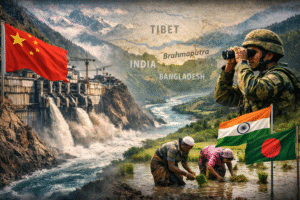


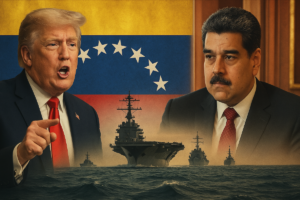

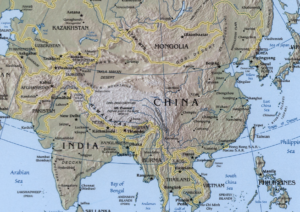
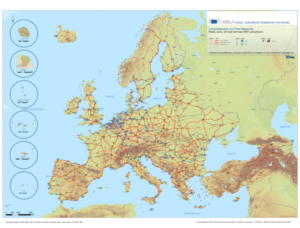


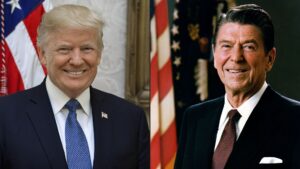
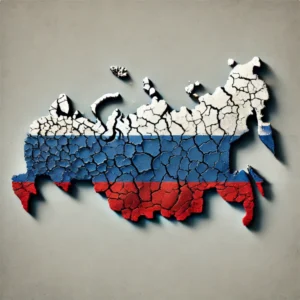
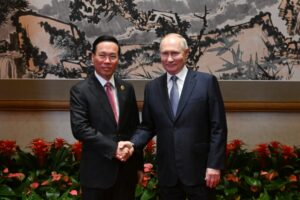
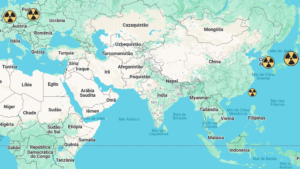
[…] would send shockwaves across the globe, weakening key U.S. adversaries, including the so-called “Axis of Evil’—China, Iran, Russia itself, and North Korea. It would also diminish anti-West sentiment in Asia, Africa, and Latin America as the Russian […]
[…] term CRINK refers to an emerging alliance between China, Russia, Iran and North Korea. The alliance seeks to increase its global influence […]
[…] term CRINK refers to an emerging alliance between China, Russia, Iran and North Korea. The alliance seeks to increase its global influence […]